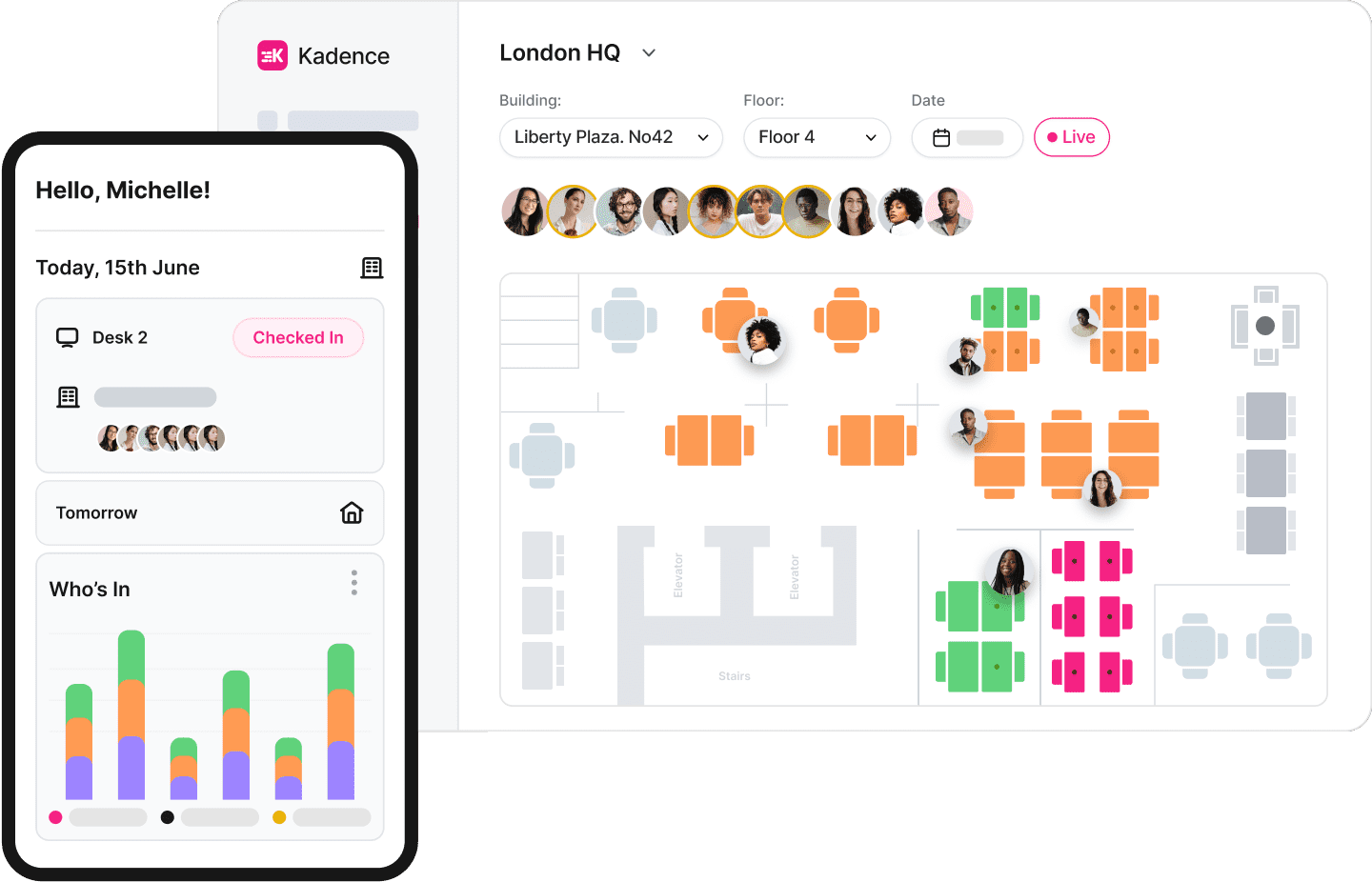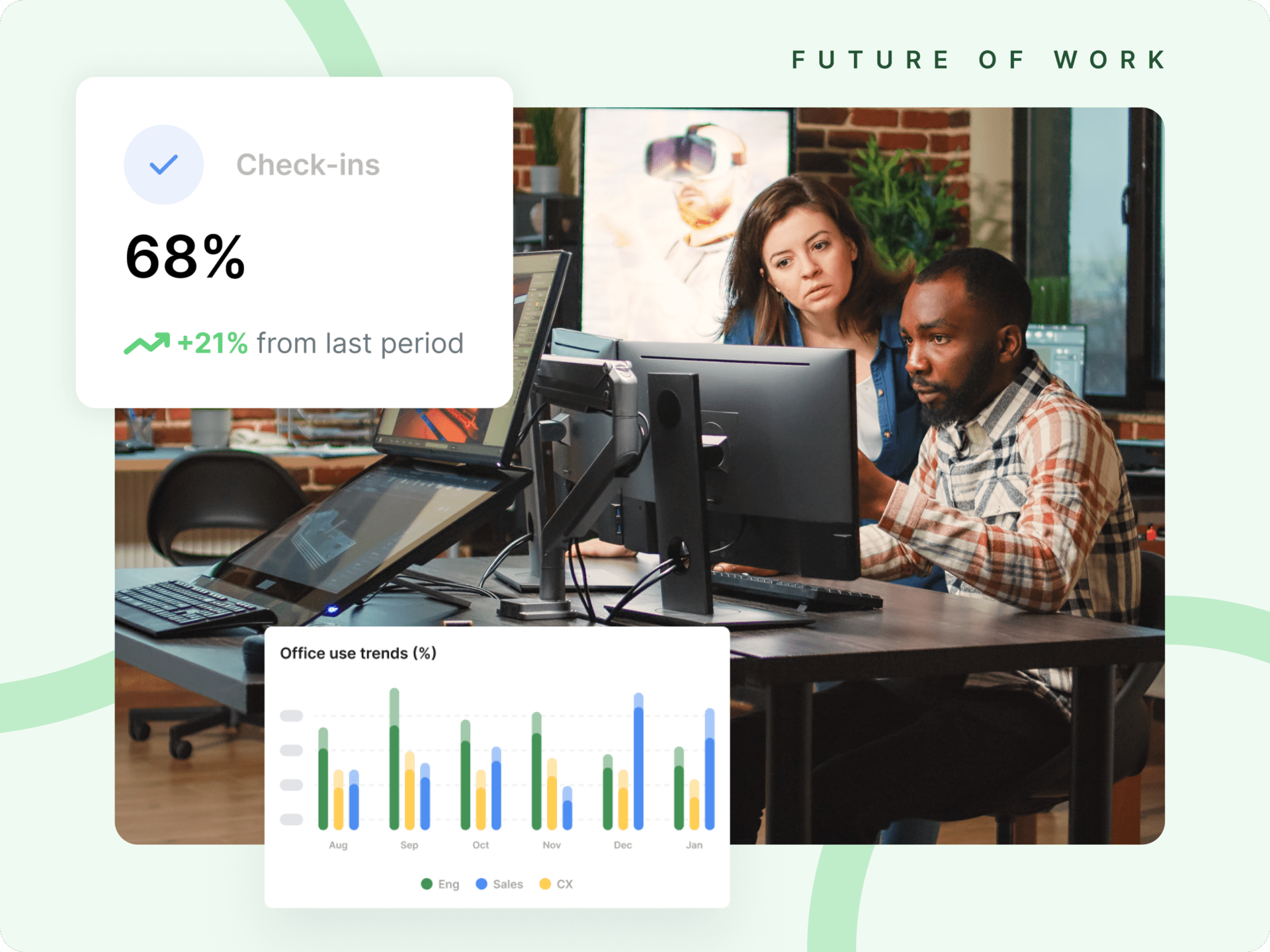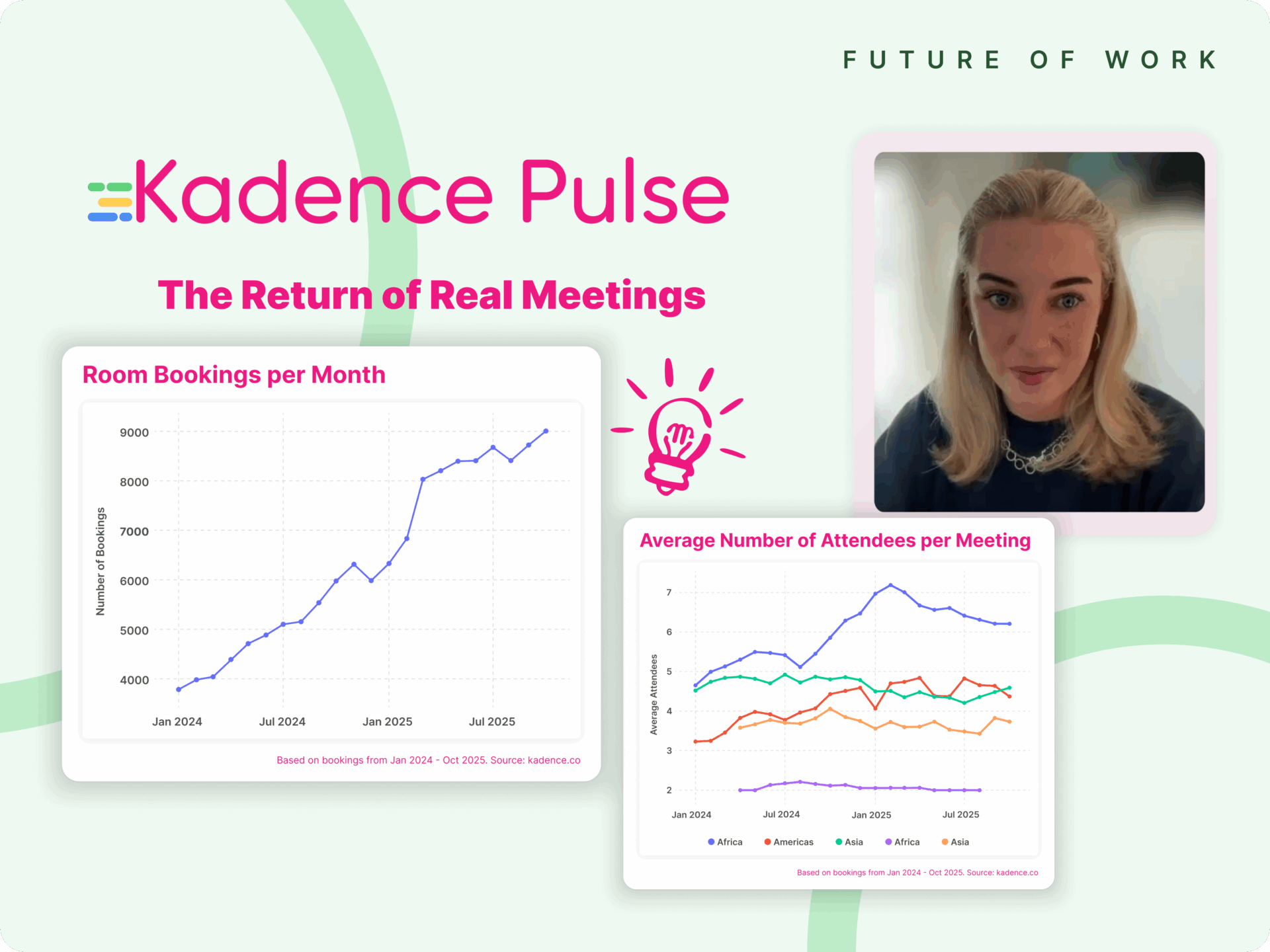Five years ago, we all became remote workers overnight. Offices emptied, commutes vanished, and homes became headquarters. What began as a global emergency response quickly turned into a radical rethinking of how we work. And somewhere along the way, we found our sweet spot — not fully remote, not fully in-office, but something smarter: hybrid work.
Fast forward to today, and hybrid work isn’t just surviving — it’s outperforming.
We now have years of data, real-world insights, and lived experience. And the verdict is in: hybrid work works — for people and for business. But why? And how can leaders make the most of it?
Let’s break down what we’ve learned.
1. Hybrid Work Improves Productivity (Yes, Really)
One of the earliest fears about remote work was that productivity would tank. But studies have consistently proven the opposite.
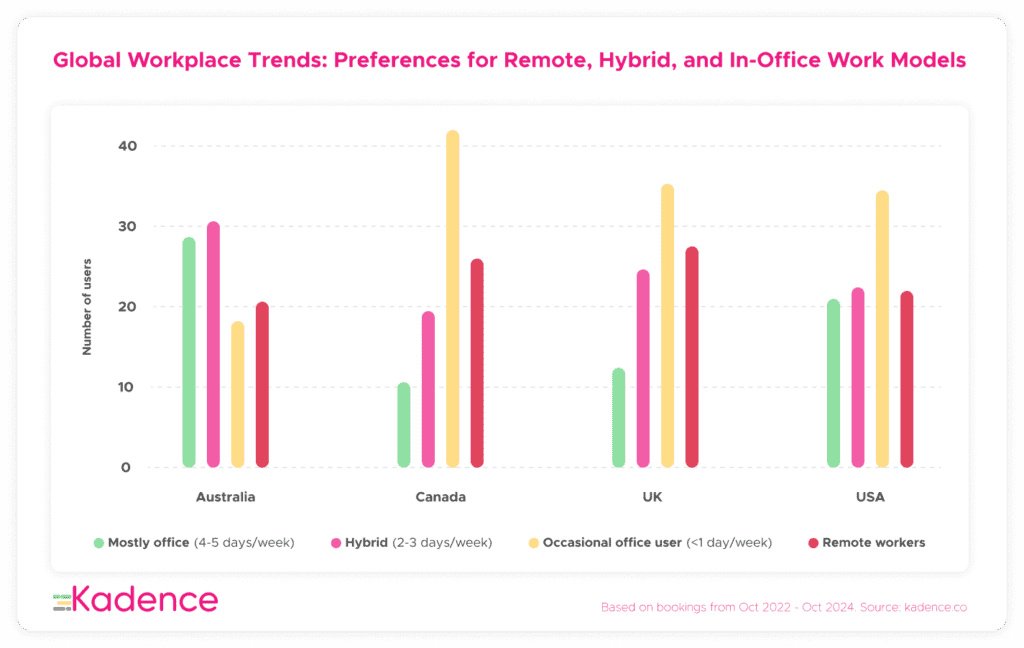
A recent Stanford study — one of the most comprehensive on hybrid work to date — followed 1,612 employees at Trip.com over six months. Half of them worked from home two days a week, while the rest stayed full-time in the office.
The result? Zero drop in performance reviews or promotion rates — and a 33% drop in attrition.
Employees got their heads-down focus time at home and came together in the office for collaboration — the best of both worlds. That blend of autonomy and connection is what makes hybrid work so effective.
And it’s not just Stanford. IWG’s 2024 report showed that 74% of hybrid workers felt more productive, and 76% were more motivated. These aren’t marginal gains — they’re game changers.
2. It Saves Money — And Not Just On Real Estate
According to Global Workplace Analytics, companies can save around $11,000 per hybrid employee per year. That’s not just about office space. It includes increased output, fewer absences, and lower churn.
When you start scaling that across a large workforce, the impact on the bottom line is huge.
Pair that with engaged, motivated employees — and you’re not just cutting costs, you’re boosting performance.
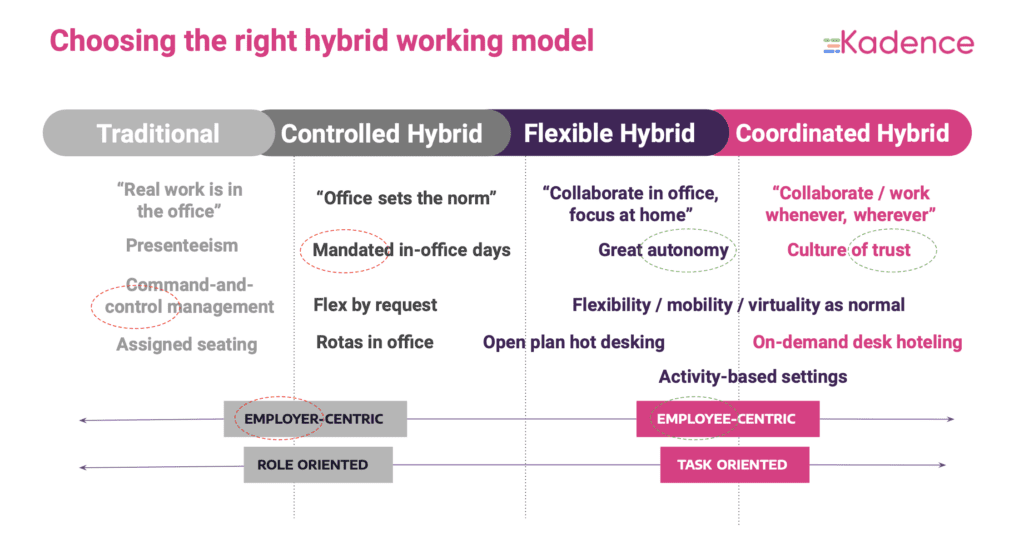
3. Flexibility Keeps Your Best People
Want to hold on to your top talent? Give them flexibility.
In the Stanford study, hybrid workers quit at half the rate of their office-only peers.
Gallup backs this up: 6 in 10 remote workers say they’d look for a new job if their employer took remote options away.
Even hybrid workers strongly value their setup. Gallup also found that employees list the benefits of hybrid work 2–3 times more often than its challenges. Flexibility isn’t a trend — it’s a retention lever.
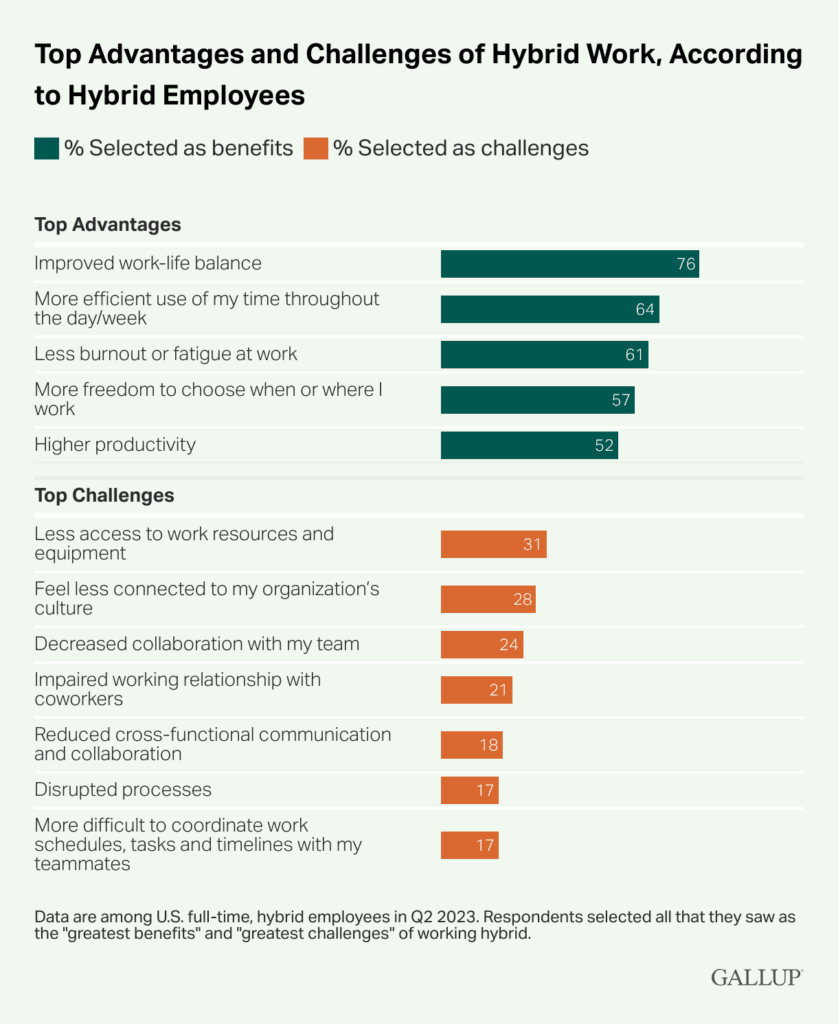
4. It’s Good For Well-Being — And That’s Good For Business
Well-being isn’t just a warm and fuzzy metric. It’s directly tied to performance, engagement, and output.
In IWG’s 2024 study, 79% of hybrid workers felt less drained, 78% reported less stress, and 72% said anxiety levels had dropped since going hybrid. And 85% said their job satisfaction had improved.
This isn’t surprising. Hybrid work gives people more control over their time and energy. That reduces burnout — and boosts creativity, focus, and collaboration.
5. The Data Backs It All Up — If You Know Where To Look
Here’s the truth: hybrid work done badly is chaotic. But done well — and driven by data — it’s a superpower.
That’s where workplace analytics come in.
With tools like Kadence, leaders can track real-time usage patterns, team behaviors, and space demands. Who’s coming in when? Which days are collaboration-heavy? What parts of the office are underutilized?
This kind of visibility helps companies reduce wasted space, support team rituals, and create better in-person moments. It’s about optimising the office for the way people actually use it.
And beyond space, analytics help you understand the human side too. Are some teams showing signs of disconnect? Could you adjust cadence or location to improve outcomes? That kind of intelligence makes hybrid work not just sustainable — but strategic.
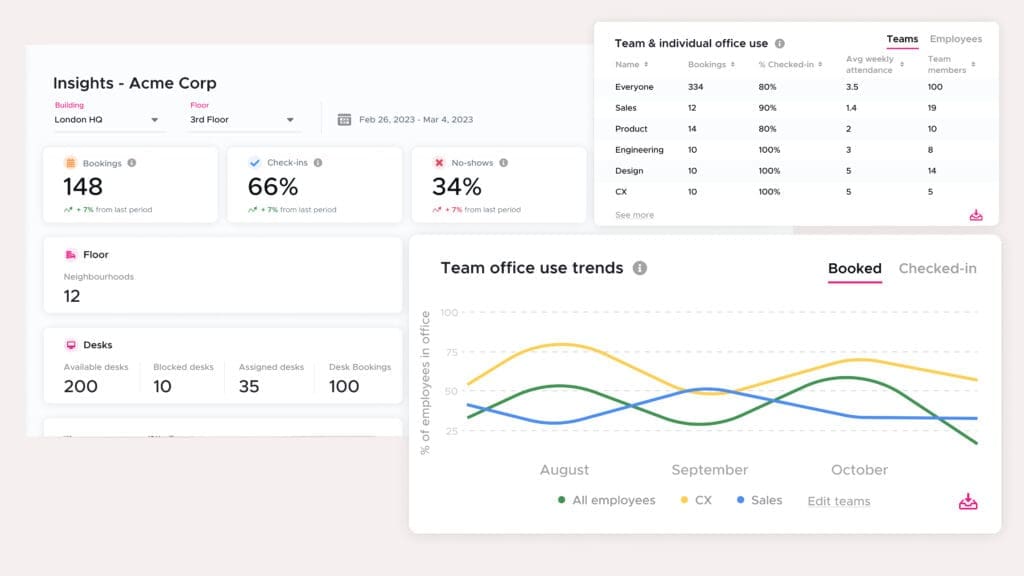
6. The Companies Getting It Right Are Thriving
This isn’t just theory — we’ve seen it in practice.
Companies like Trip.com, Nvidia, and Airbnb have embraced hybrid work and seen real results.
- At Trip.com, a six-month trial saw no drop in performance, but a 33% drop in resignations — saving the business millions in rehiring and onboarding costs.
- Nvidia chose not to enforce a full-time office return, focusing instead on trust and flexibility — and they’re now one of the most valuable companies in the world.
- Airbnb let employees live and work from anywhere, then brought them together intentionally. The result? Over one million people visited their careers page in a single week after they announced the policy.
Meanwhile, companies clinging to rigid RTO mandates are seeing pushback, attrition, and PR headaches.
Hybrid is no longer an experiment — it’s a competitive edge.
Final Thoughts: It’s Time To Move From Policy To Performance
Hybrid work isn’t new anymore. But many companies are still treating it like a temporary perk or a set of restrictions.
That’s a mistake.
The best-performing organisations don’t see hybrid as a policy. They treat it as a strategy — one that’s flexible, measurable, and aligned with their business goals.

At Kadence, we help companies move from chaos to clarity. From guesswork to data. From rigid policies to adaptive performance.
Because the future of work isn’t about where people work. It’s about how they work best.
And five years in, we finally have the evidence — and the tools — to get it right.
